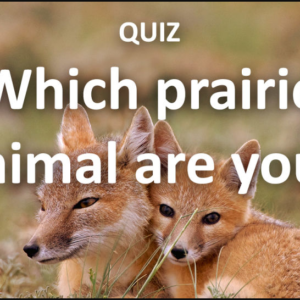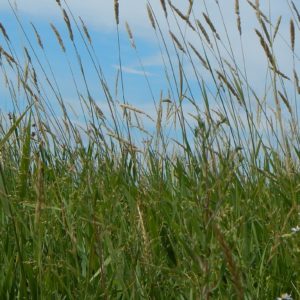Grasshuggers Unite!
By Ian Davidson
“There is no point pretending that everything is hunky-dory for the wildlife and wild places of the Great Plains” – Candace Savage
It’s time for grasshuggers to unite. More than 70 per cent of Canada’s native prairie and wetlands have already been lost through conversion to agriculture and other development, and these conversion losses continue. Linear developments such as pipelines and roads increasingly fragment grasslands habitats, and drought and severe storms caused by climate change are an increasing threat. Grassland bird populations have declined by almost 40 per cent since 1970. The list of grasslands species at risk continues to grow.
Compounding these threats is the federal decision last year to transfer one million hectares of federally administered community pastures to the prairie provinces. Many of these community pastures, such as Govenlock, Naslyn and Battle Creek (706 sq. km. in total) provide critical short-grass prairie habitat for pronghorn antelope, as well as threatened species such as ferruginous hawk, burrowing owl, swift fox, and greater sage grouse (which is now on the brink of extirpation).
Fortunately, a grassroots movement of naturalists and ranchers is coming together to conserve native grasslands as well as build resilient ranching communities. Why these strange bedfellows? In part this is because cattle grazing, properly managed, is an excellent conservation tool for grasslands ecosystems. Overall, there is no better opportunity for biodiversity-friendly agricultural production than from cattle grazing on grasslands.
And so in June, I joined Margaret Atwood and Graeme Gibson on the Prairie Passages Tour, which culminated in a hugely successful gala dinner in Regina with 600 participants. Naturalists, including Nature Canada, ranchers and industry in southeastern Alberta have also formed the Sage Grouse Partnership to help save this iconic turkey-like bird. Nature Canada participated in the inaugural meeting of the Canadian Roundtable on Sustainable Beef in July hosted by the Canadian Cattlemen’s Association. A core concept underlying the notion of sustainable beef is conservation of native grasslands that support cattle grazing and hence local ranching communities. The Roundtable is particularly interesting in that retailers such as Loblaws and McDonalds and agrifood corporations such as Cargill are key players at the table.
Provincial and federal governments also have a crucial role to play in conserving native grasslands. The federal government should be establishing National Wildlife Areas at Govenlock, Naslyn and Battle Creek in southwestern Saskatchewan and the One Four Research Farm in southeastern Alberta that are known to provide critical habitat for grasslands wildlife. The federal government should not transfer any of the other community pastures without assurances that natural values of those lands will be continue to be protected and in any event should delay the transfers until local communities have been properly consulted. For their part, Saskatchewan, Alberta and Manitoba should be considering establishing protected areas for native grasslands as well. Governments should be seriously considering providing financial support to ranchers who provide ecological services (protecting watersheds, conserving wildlife habitat) that the rest of us need and enjoy. Finally, all levels of government need to step up fast and strong to save the sage grouse.
Stay tuned as Nature Canada continues its work to unite grasshuggers to protect native grasslands.




